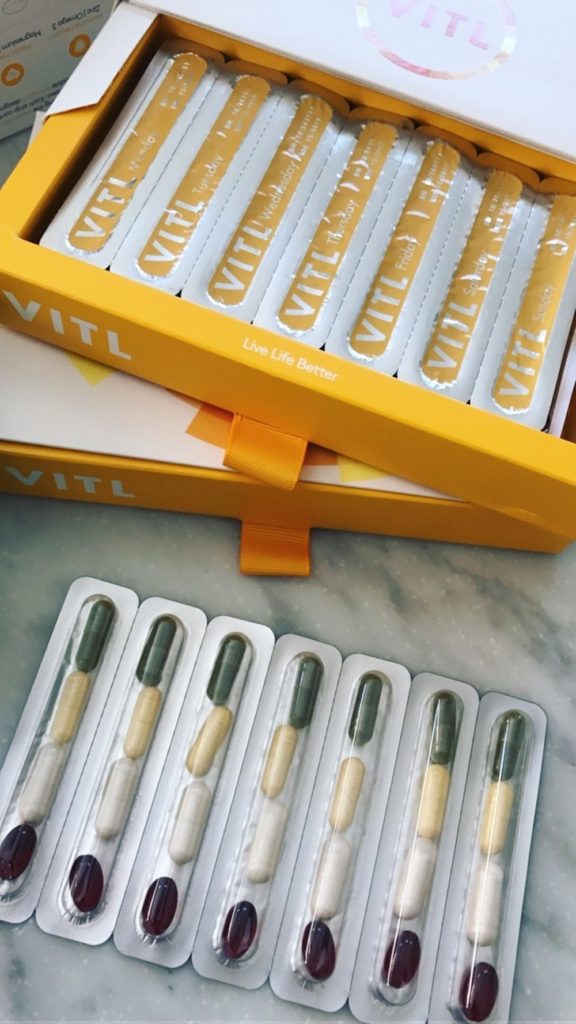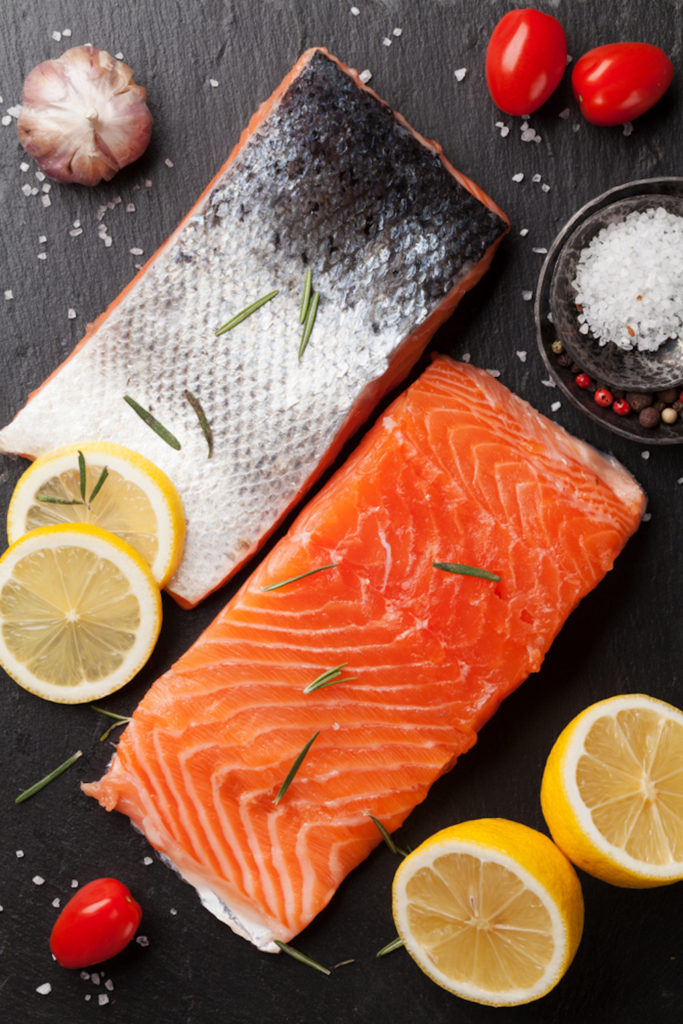Interview: Dr. David Friedman on How Counting Calories Is Unhealthy
Dr. David Friedman discusses some proactive steps we can take when relying on fast food, and how permanent weight loss can be achieved by doing three things, and one of these three things is not a diet program, or counting calories.
GLITTER: What are some proactive steps we can take when relying on fast food?
FRIEDMAN:Whoever snuck the “S” in FAST FOOD was a clever marketer. It’s no secret that fast food is synonymous with fat food; however, if you are pressed for time and it’s your only option, there are some healthy steps you can take. For starters, go easy on the condiments. Two tablespoons of mayonnaise adds a whopping 190 calories, 140 milligrams sodium, and 22 grams of fat. The same amount of ketchup gives you 30 calories, 380 milligrams of sodium, and 32 grams of sugar! Instead squeeze a few small drops (1/4 of a standard foil ketchup packet) directly on the top part of the bun. Putting ketchup right on top brings the flavor to your taste buds more quickly, and you won’t even notice the difference in volume.
When eating at Taco Bell, instead of the crispy shell chicken taco, opt for a grilled chicken soft taco. Instead of a steak chalupa, order a shrimp ensalada. Don’t add sour cream! At Subway, instead of eating white bread or wraps, go for a whole-grain bread sub and take off the top slice and eat it open-faced. At KFC, instead of fried chicken, original or extra-crispy, opt for their skinless chicken breast without breading. If that’s not an option, peel off the skin and use a napkin and pat the chicken to remove excess grease. For burger restaurants like McDonalds, Burger King and Hardees, keep way from the fried chicken sandwich and order their grilled option. Many now offer salads as a healthier option. Be sure and remove the bacon, croutons and cheese. Instead of using fattening ranch dressing, go for balsamic vinaigrette or Italian dressing. And most importantly, avoid drinking soda with your meal! Soda consumption is one of the major contributing factors to obesity. Instead, go for bottled water or unsweetened tea.
GLITTER: How many calories is enough? Do we count them?
FRIEDMAN:Fad diets come and go, but the most popular diet of the last century is calorie counting. It’s become the standard methodology for people wanting to lose weight. The problem with a calorie-counting diet is that it can put your body into a “famine” mode which causes you to gain back your original weight and sometimes even more. This is why calorie-counting diets are often referred to as “yo-yo diets.” By definition, a calorie is a measurement of heat. It’s the amount of heat required to raise the temperature of one kilogram of water through one degree Celsius. A calorie is heat! If heat caused weight gain, everyone living at the southern hemisphere would be obese. But actually, they’re leaner.
The biggest calorie-counting organization in the world is called Weight Watchers. They’ve been having people count calories for more than fifty years! Interestingly in 2011, David Kirshaw, CEO of Weight Watchers, said in a Time magazine interview, “Calorie counting has become unhelpful. When we have a 100-calorie apple in one hand and a 100-calorie pack of cookies in the other, to view them as being ‘the same’ makes no sense.” For Weight Watchers to make a statement like that really puts into perspective the lack of success calorie counting has when it comes to losing weight and keeping it off. Calorie counting diets simply don’t work! It also means having to become a mathematician and that takes the enjoyment out of eating. Our grandparents never needed a calculator when they ate. If you eat the right wholesome foods, you don’t have to count calories.
GLITTER: What are your tips on vitamins and where do we begin to look for a good daily supplement?
FRIEDMAN:Many people choose dietary supplements as a natural approach to keep from getting sick and some even take them to boycott giving their money to Big Pharma. What many of these folks don’t realize is, the pharmaceutical industry owns all of the major vitamin companies on the market. Bayer HealthCare (of aspirin fame) makes One A Day and Flintstones Chewables. Theragran-M is manufactured by Bristol-Myers Squibb. Centrum, the giant in the vitamin industry, is owned by the largest pharmaceutical company, Pfizer. Just like the synthetic drugs they manufacture, there is nothing “natural” in their vitamin and mineral supplements. Most vitamin supplements are made by chemists in a laboratory. Our body wasn’t created in a lab and I believe our nutritional supplements shouldn’t be either. In my book Food Sanity, I share how many of the vitamin supplements sold on the market are created with chemicals also used to manufacture drugs. For example, synthetic vitamin A is made using methanol, benzene, acetylene, petroleum esters (also used to make antibiotics.) Synthetic B vitamins are manufactured using 2N acetic acid (also used to make antimicrobial and antifungal medications.) Because the term “natural” isn’t clearly defined by the government, this gives supplement manufacturers free reign to create inferior and often unhealthy supplements. It is possible to get the daily nutrition you need from eating a healthy diet; however, if you choose to supplement your diet, follow my ABCs: Absorption, Balance, and Certification.
A—Absorption A whole-food, natural nutritional product is the best way to ensure absorption and assimilation. If you choose pills, stay away from tablets or compressed pills containing binders, fillers, waxes, shellac, or added artificial colorings. Never take pills that contain gelatin, which is created by boiling the skin, tendons, and ligaments of animals. Gelatin capsules sometimes contain harmful properties due to animal origin. Since many animals are given antibiotics and eat foods that contain pesticides, these toxins can show up in gelatin capsules. Instead of gelatin, look for capsules with vegetable or plant cellulose or veggie caps, as these offer better absorption. To ensure you are getting whole-food sources, which are also better absorbed, look for words in parenthesis in the ingredients list, such as leaf, fruit, extract, plant, stem, root, or seed. This tells you that the source is naturally derived.
B—Balance If you look at nature, fruits, vegetables, legumes or nuts, or other plants do not contain massive amounts of vitamins, minerals, enzymes, or amino acids. Only in pill form do you find hundreds and thousands of milligrams. In nature, it’s about balance, not mega doses! It’s best to supplement your diet with a whole-food, plant-based supplement. Don’t panic if you don’t see milligrams listed. If it’s truly a whole food source, you may not see any amounts listed, but instead you’ll see a “proprietary” fruit or vegetable blend listed. Keep in mind that many fruits and vegetables contain trace and macro minerals in parts per million. A proper natural balance is healthier than taking man-made megadoses which can create imbalances in the body. With nature, a little goes a long way!
C—Certification What you see on the label isn’t always what you get in the bottle. Manufacturers are not held accountable for delivering what their label promises. When choosing any dietary supplement, look for a product that is certified as cGMP, which means it has passed Good Manufacturing Practice regulations. This certification ensures a stringent series of tests have been passed, and that proper design, monitoring, and control of manufacturing processes and facilities have been evaluated. Also look for the United States Pharmacopoeia (USP) or British Pharmacopoeia (BP) designation on the label. This means that the vitamin isolates are the highest quality you can buy, and are the most easily dissolved in the digestion process. USP and BP set widely recognized protocols for the quality, purity, strength, and consistency of dietary supplements in more than 130 countries. To find manufacturers that use these standards, visit www.usp.org.
GLITTER: The biggest question readers have is how to get enough protein, what are your tips?
FRIEDMAN:Whether you’re an athlete, lab geek, or simply a person trying to lose weight, eating a high amount of protein has been touted as the best way to gain muscle, speed metabolism, lose weight, increase energy, and improve health. Two of the most popular diets, Atkins and Paleo, both advocate eating a lot of protein, especially beef! The average person eats a whopping 270.7 pounds of red meat per year! Too much protein from red meat has been correlated with arthritis, heart disease and cancer. Americans have been extremely misled about the need for protein derived from red meat. Research confirmed by many studies around the world shows that a plant-based diet can provide sufficient human protein requirements. Protein from plant sources and better assimilated into the bloodstream than protein derived from animals. How much protein do we really need? According to the American Journal of Clinical Nutrition, we only need 2.5 percent of our daily calories from protein. That means if you eat the recommended 2,000 calories per day, only 50 calories should come from protein sources. It’s quite easy to get that much protein from fruits, vegetables, beans, nuts, and grains.
Body builders are notorious for consuming excessive protein so they can get big and strong. How does an elephant grow to 10,000 pounds by eating nothing but plant food? They couldn’t grow so big and strong if plants weren’t loaded with enough protein. You might think it’s because elephants eat more than humans do? Actually, that’s not so. Once you adjust for body weight, elephants actually eat less than we do. A typical American eats about 3 pounds of food per day per 100 pounds of body weight. Even though elephants are much larger than humans (weighing up to 20,000 pounds,) they eat only 1.9 pounds of food per 100 pounds of body weight.
GLITTER: Can we eat fish every day?
FRIEDMAN:Yes, you can eat it daily. Fish is one of the healthiest foods on the planet. In addition to being a great source of protein, fish contains omega-3 fatty acids, crucial for fighting inflammation, the underlying cause of chronic diseases like arthritis, Alzheimer’s and heart disease. However, farm raised fish do not contain these healthy fatty acids and worse, can be harmful. They contain artificial dyes, and polychlorinated biphenyls- PCBs, considered carcinogenic. Farm-raised fish are fed soy and corn, and that means they are also eating the pesticides used in the process of harvesting them. When these chemicals are ingested by fish, they end up in their meat, which is then consumed by humans.
The most commonly farmed fish is the Atlantic salmon. This is also the most popular fish eaten in America. Ninety percent of the salmon sold in the United States is farm raised. Concentrations of PCBs are higher in farm raised fish because it accumulates in the fat. Obese farm-raised salmon are a haven for these toxic chemicals. Just like a professional marathon swimmer would have less fat on his body, so do wild-caught salmon.
Unfortunately, labels can be misleading which requires you do a little detective work. Farm-raised salmon sells year-round, while wild salmon is generally available only from June through October. If you are on a budget, eat canned salmon. Farmed salmon doesn’t can well so most salmon sold in a can are wild caught. Be wary of color. Farm-raised salmon has been fed artificial coloring to fool you. Avoid light orange- or pink-colored salmon, especially when you see white stripes (which is fat) between the meat layers. Wild salmon contains minimal fat, and the color is a deeper, darker shade of red that is more consistent throughout. If you don’t trust your eyes, take the taste test: wild salmon tastes tangier without a metallic taste, and the meat has a firmer consistency. Still not sure? To reduce your exposure to PCBs, trim fat from fish before cooking. Fat is where these chemicals migrate. Also, choose broiling, baking, or grilling over frying, as these cooking methods allow the PCB in the fat to cook off the fish.
GLITTER: What about mercury in fish?
FRIEDMAN:Mercury is a naturally occurring element found in the soil, air, water, and food. We hear all about the dangers of mercury in fish, but cattle products also contain mercury, and so do mushrooms and various other crops in agriculture. High fructose corn syrup, used in fruit juices, cereals, salad dressings, and condiments, contains mercury. None of these items seem to have this “toxic mercury” stigma that fish do.
The truth is, the oceans are not the mercury-laden cesspools we’ve been led to believe. In Food Sanity I debunk this popular mercury fish myth by exploring cultures around the world that eat fish daily, sometimes three times a day. Their blood tests show no mercury toxicity, and they are the epitome of good health. Pregnant females have been told to avoid certain types of fish because they contain mercury that can “harm the unborn fetus.” There is simply no credible research to support this. In fact, evidence shows quite the opposite. Cultures where pregnant females eat a diet primarily of fish (mostly tuna) have healthier children with higher IQ scores than mothers avoiding fish.
While fish do contain very low levels of mercury (parts per billion,) mercury cannot cause humans harm unless it occurs in extremely high enough amounts to inhibit selenium dependent enzymes, which naturally protect the cells of the brain. In other words, if fish contains more selenium than mercury, it cancels out the mercury that is absorbed by the body. In my book, I have a chart of 15 of the most commonly eaten fish. All of them except for the mako shark have more selenium than mercury. Okay, so play it safe. If you see mako shark on the menu, don’t order it. The other wild caught fish are good for you. Naturally derived mercury found in fish is not a health concern.
GLITTER: What are the 3 keys to weight loss?
FRIEDMAN:With so many contradicting diet plans on the market, the most common question patients ask me is, which one works? My answer usually surprises them, “They ALL work!” Whether it’s eating for your blood type, Atkins, Paleo, Zone, Keto, Nutrisystem, or Weight Watchers. If you follow the program, you will experience weight loss. Unfortunately, the results are usually just temporary. One of the main reasons why so many different diets initially work is because they all have one thing in common—they change a person’s routine. They all promote eating different foods, different ways at different times. Whether it’s eating grapefruits, or steak three times a day, changing your portion sizes, or going vegan; when you mix up your daily routine, you will alter your metabolism, change your blood glucose levels, which in turn, can lead to weight loss…the challenge is keeping it off!
The word diet comes from the Greek word diatia, which means way of living. That’s the key to achieving permanent weight loss. In Food Sanity, I share how to get in touch with the true meaning of the word diet, your way of living. This doesn’t just include your eating habits. Permanent weight loss can be achieved by doing three things: Eating healthy, avoiding obesegens (chemicals that cause weight gain!) and getting deep restorative sleep. That’s the recipe to achieving permanent weight loss.
Step 1: Avoid White Foods
If you want to lose weight, live by the mantra, “If it’s white, keep it out of site!” Stay away from white foods! Doing just this, will help keep your blood sugar balanced, increase your energy, help you sleep better, and lose those unwanted pounds! White food refer to those that have been processed and refined, and include milk, flour, rice, pasta, bread, crackers, cereal, and anything sweetened with table sugar or high fructose corn syrup. Consuming these foods will make your blood sugar spike, then drop, causing you to overeat and gain weight. There are a few exceptions to “no white” rule. Natural, unprocessed white foods are good, including: Cauliflower, garlic, mushrooms, onions, potatoes, bananas, white fish, and white poultry meat.
Eating less-processed “good carbs” are more satisfying to the cells of your body and are therefore more filling than refined carbs. The bad white foods make portion control very difficult because they do not satiate well. The more you eat, the hungrier you get. By consuming whole grains like oats, barley, rye, and quinoa, you’re getting a great source of fiber, which creates a slower absorption rate and keeps you feeling fuller longer.
Step 2: Deep Restorative Sleep
There’s been a plethora of research showing how a lack of sleep contributes to obesity. A study published in The American Journal of Human Biology, showed that sleeping less than six hours increases a person’s body mass index (BMI), leading to obesity. Brigham and Women’s Hospital in Boston, analyzed sleep behaviors in a completely controlled laboratory environment. The evidence shows short or poor-quality sleep is linked to an increased risk of obesity.
The reason for this is, when we are sleep deprived, it can wreak havoc on our hormones that affect our appetite and metabolism. Two of the big culprits are the appetite regulating hormones Ghrelin and Leptin. Grehlin is the hormone that tells the body to eat and Leptin tells you when you’re full. When you’re sleep deprived, you have more Grehlin telling you to eat than you do Leptin telling you to stop! Another hormone that rises when you are sleep deprived is cortisol. The body releases this hormone in response to stress, and it is a major contributor to fat accumulation in the abdomen. Cortisol also increases blood sugar levels.
You should get at least 7 hours of deep restorative sleep per night. Research published in the American Journal of Epidemiology shows women average just 6.3 hours of sleep per night and men sleep only 5.6 hours. In Food Sanity, I share why we’ve become so sleep deprived and tips on how to achieve 7-8 hours of deep restorative sleep.
Step 3: Avoid Obesogens
While food consumption is the main focus of most diet plans, they fail to address the chemicals we’re exposed to everyday, which play a major part in the obesity epidemic. Called obesogens, or “endocrine disruptors,” these chemical compounds increase the fat cells you have, decrease the calories you burn, and alter the way your body manages hunger. Obesogens also cause the liver to become insulin resistant. When this happens, the body must produce more insulin to store energy, which leads to increased fat storage. It’s a vicious cycle.
While many dieters avoid fattening, sugar-laden, and processed foods, it’s also important to be aware of the obesogens hiding inside and around your food. This includes chemicals injected into our livestock and sprayed on our fruits and veggies. Obesogens are also found in food wraps, plastic containers, the metal lining of canned foods, non-stick pans, plastic bottles, and grocery store receipts. Even the flame-retardant chemicals inside couch cushions are obesogens! Yes, your couch could actually be making you fat, which puts a totally new spin on the phrase, “couch potato.”
The average person is exposed to over 100 obesogens every day! Research from the University of Texas Health Science Center suggests that many of the most popular supermarket foods—including dairy, meats, condiments, drinks, and pizza—are contaminated with a variety of plastic chemicals called phthalates. In addition to obesity, these chemicals have been linked to asthma, attention-deficit hyperactivity disorder, breast cancer, type II diabetes, altered reproductive development, and male fertility issues. While it may seem like you can’t escape the plethora of obesogens surrounding you, it is possible to avoid exposure to many of them. Knowledge is power and by paying attention to labels and how your food is grown, raised, and packaged, you can live a healthier and leaner lif
GLITTER: What are some things we can keep in our kitchen to never be empty handed when pressed for a meal?
FRIEDMAN:A hard-boiled organic egg is a great option to keep handy in your fridge. Even though it’s small, it’s chock full of essential vitamins and minerals such as potassium, iron, zinc, vitamin E and folate. With 6.5 grams of protein, a hard-boiled egg can refuel your body and help control hunger. Mixed Nuts are another great quick and easy way to fuel and nourish the body. They offer healthy fats and lots of fiber. Eating nuts in moderation can even help you lose weight. They’re perfect for carrying with you when you’re on the go.
Another great option is apple slices with almond butter. Apples really do help keep the doctor away. They are high in fiber and polyphenol antioxidants which help improve gut health, lower risk of heart disease diabetes and cancer. Almonds contain healthy fats, fiber, protein, magnesium and vitamin E. The health benefits of almonds include lower blood sugar levels, reduced blood pressure and lower cholesterol levels. They can also reduce hunger and promote weight loss.
One of the staples in my kitchen are sweet potatoes. They offer an excellent source of vitamin A, vitamin C, manganese, copper, potassium, dietary fiber, niacin, vitamin B1, vitamin B2 and phosphorus. Unlike other produce that goes bad quickly, sweet potatoes can stay fresh for weeks! Sweet potatoes are naturally sweet-tasting but their natural sugars are slowly released into the bloodstream, helping to ensure a balanced and regular source of energy, without the blood sugar spikes linked to fatigue and weight gain. Add a little cinnamon (anti-inflammatory properties) and some extra virgin olive oil and cook them in the oven or microwave.
GLITTER: How do we avoid GMOs?
FRIEDMAN:Several animal studies indicate serious health risks associated with Genetically Modified food consumption including infertility, lowered immune system, accelerated aging, dysfunction of the liver, kidney, spleen and gastrointestinal system. On Dec 16, 2013, the American Academy of Environmental Medicine, urged physicians to consider the role of GM foods in the nation’s health crisis, and advise their patients to avoid all GM foods whenever possible. Unfortunately, the U.S. does not require food manufacturers to identify products produced with genetically modified crops. This means consumers need to take control of what they eat by doing their own due diligence. Here are a few tips:
The PLU (Price Look Up) stickers on produce you find at the grocery store indicate how the food was grown. For example, organic produce has a 5-digit PLU code beginning with the number 9 and genetically modified produce begins with the number 8. An easy way to remember this is, “The eight isn’t great but the nine is fine!” If you see a 4-digit PLU code, this means the produce was conventionally grown. In addition to the PLU stickers, look for a “Non-GMO Project’s Product Verification” or “USDA Certified Organic” on the label to ensure the product isn’t genetically modified ingredients.
Another way to avoid GMO is to eliminate all processed foods that contain corn or soy that is not labeled 100 % “USDA-Certified Organic.” Avoid vegetable oil, vegetable fat, and margarines (made with soy, corn, cottonseed, and/or canola.) Instead use organic sources of grape-seed oil, virgin coconut oil, hempseed oil, and olive oil, which are available at organic and whole-foods markets. Stay away from ingredients derived from soybeans: soy flour, soy protein, soy isolates, soy lecithin and vegetable proteins, soy-protein supplements. Avoid ingredients derived from corn, which includes corn flour, corn starch, corn syrup, cornmeal, corn gluten, and high-fructose corn syrup. Keep in mind, the food industry often tries to hide high fructose corn syrup on the labels by using deceptive names like maize syrup, glucose syrup, and crystalline fructose.
Avoid non-organic products that lists “sugar” as an ingredient (and NOT pure cane sugar). Seeing just sugar listed almost always means it includes Genetically Modified sugar beets. But don’t think that means going for the “sugar alternatives” is the answer. Artificial sweeteners are derived from genetically modified microorganisms and manufactured using an array of chemicals that don’t belong in the human body! Artificial sweeteners are not good for you and should be avoided.
When shopping for fruit juices, go for those that are 100 percent juice. Most pure fruit juices, except for papaya, are not genetically modified, but the sweetener used in many fruit juices (and sodas) is high fructose corn syrup, which is almost always derived from genetically modified corn. Be particularly careful when buying papaya juice or the fruit, because this is the most common genetically modified crops here in America. Choose papayas that are grown in Asia, Brazil, Belize, or Mexico
GLITTER: What’s public enemy #1 when it comes to food?
FRIEDMAN:The worst food you can put into your body is dairy! We are brainwashed as children into believing that if we want to grow up big and strong we need to drink milk. The fact is, children who drink milk get more chronic ear infections, have more allergies, are more likely to be overweight, and are at greater risk of diabetes. Also, milk is the most common allergy, affecting eight out of ten adults with symptoms they don’t even associate with their dairy consumption.
A major reason why cow’s milk is bad for us is the protein it contains called casein. Humans don’t have the enzymes to break down the high amount of casein, a protein found in milk. While casein makes up approximately 20 percent of the protein found in human breast milk, cow’s milk contains 80 percent, which is far more than humans are designed to break down. Casein from cow’s milk is also used to make glue to hold together wood (think of the cow logo on Elmer’s Glue) and a polymer used to make plastics. If you were to swallow glue, your body would consider this an invasion and attack it. When you ingest casein, a glue like substance in milk, your body attacks it by producing histamines, which cause mucus production that can lead to bronchitis, allergies, asthma, sinus and ear infections, irritable bowel syndrome, and diarrhea, just to name a few. Numerous studies, including data from the World Health Organization (WHO), have also linked consumption of casein with increased risk of heart disease, high cholesterol, and type 1 diabetes! Casein is what makes a 100-pound baby calf grow into a 2,000-pound cow. The average human baby weighs less than 8 pounds and grows into a 170-pound adult. Here’s a common-sense question for you: Would you use rocket fuel in the gas tank of your moped? No! Why would you put gargantuan-size cow fuel inside a human body?
Whenever I suggest that my patients eliminate milk, I always hear the same response, “How am I supposed to get calcium for my bones?” Contrary to all those milk-mustache ads, milk doesn’t build strong bones. In fact, studies shows milk may cause brittle bones osteoporosis, including unbiased research published in the American Journal of Epidemiology, American Journal of Public Health and the British Medical Journal. The main reason people drink cow’s milk is for its calcium content for strong bones. The milk you purchase at the grocery store is pasteurized, which means it’s heated to up to 280º. While exposing milk to excessive heat does help to kill off harmful bacteria, it also damages the calcium content, making the mineral unusable by the body. What if raw unpasteurized milk was available? It still wouldn’t give you enough magnesium needed for your body to absorb the calcium. The calcium to magnesium ratio in cow’s milk is 9 to 1 (90 percent calcium/10 percent magnesium). Most experts recommend having a ratio of two parts calcium to one-part magnesium and some studies show a 1 to 1 ratio is better. When you look at plants, you can attain the perfect balanced ratio of calcium and magnesium. Sources like almonds, summer squash, sesame seeds, and spinach offer almost a perfect 1 to 1 ratio of calcium to magnesium. These ratios allow the two bone-building partners Calcium and Magnesium to do their job. Cow’s milk, pasteurized or not, does not help build strong bones.
There’s so many healthy and delicious dairy free alternatives available for your cereal, and your recipes that require milk including: cashew milk, almond milk, hemp milk, and coconut milk.
GLITTER: Why is there such an increase in food allergies?
FRIEDMAN:Food allergies only affect 3.5% of the U.S population yet 38% believe they are allergic to food. Many of these people don’t actually have an allergy but a food intolerance. A true food allergy causes an immune reaction that affects numerous organs in the body. It can cause a range of symptoms and can be severe or life-threatening. In contrast, food intolerance symptoms are less serious and are often limited to digestive problems. These are reversible. The key is focusing on improving digestion and eliminating the factors that have created the intestinal immune response to certain foods.
Food intolerances are often due to chemicals people are exposed to which can wreak havoc on the intestinal flora and its ability to digest and assimilate certain foods. These chemicals can come from antibiotics, taking them or eating animals that were fed them, hormones, dyes, artificial sweeteners and preservatives. Sometimes plastic food containers are to blame. Many contain Bisphenol-A (BPA), a synthetic estrogen primarily used to harden plastics. These can leach into your food and have a negative effect on the immune system, increase insulin resistance, cause weight gain and may even contribute to the cause of cancer!
It’s not necessarily food itself, but how it’s grown, harvested, stored, and cooked that has caused the increase in the rising food intolerance epidemic. Being more proactive, reading labels, and learning where your food comes from is a prudent approach to safeguarding your well-being and being able to eat the foods you used to love.
Dr. David Friedman is a #1 Bestselling Author, Doctor of Naturopathy, Clinical Nutritionist, Chiropractic Neurologist, Board Certified Alternative Medical Practitioner, and Board Certified in Integrative Medicine. He’s the author of Food Sanity, how to eat in a world of fads and fiction. Dr. Friedman hosts the syndicated program To Your Good Health Radio, which has changed the face of talk radio by incorporating entertainment, shock value and solutions to everyday health and wellness issues. DrDavidFriedman.com

Editorial Director | Writer | Tweet me @heatherriccio












